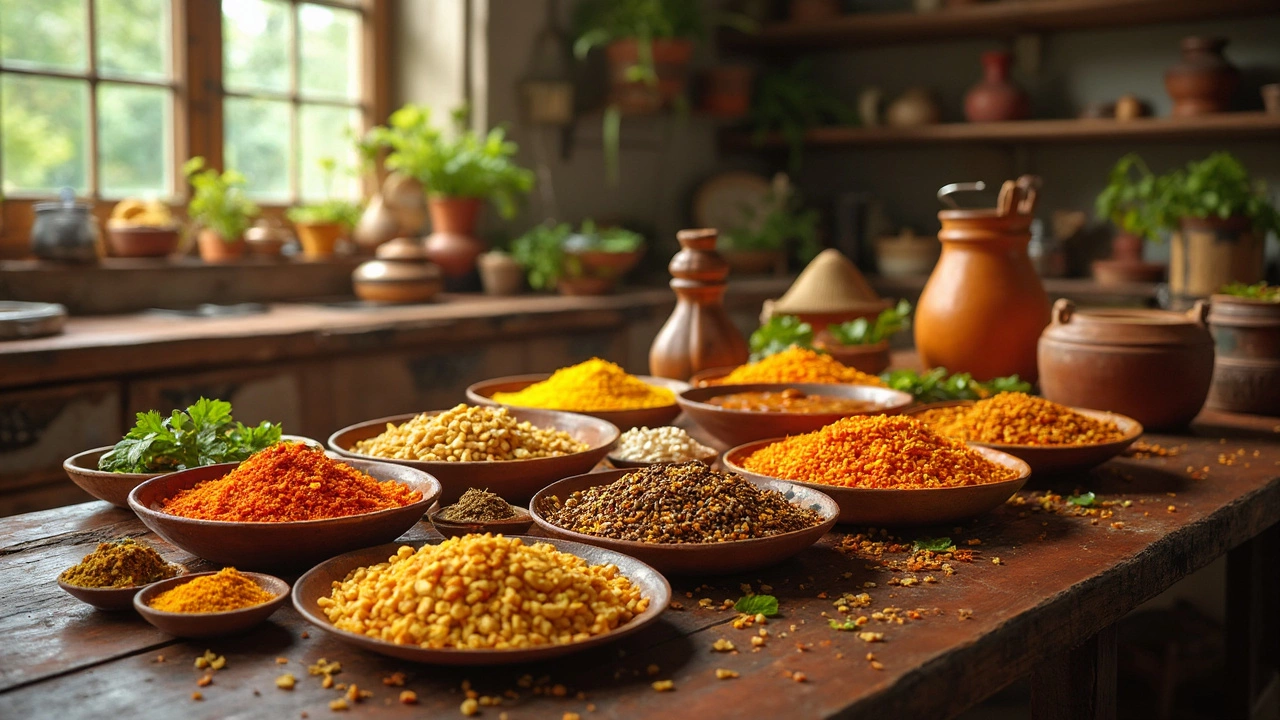Healthy Meals Made Easy – Indian Flavors & Smart Swaps
If you think healthy meals mean giving up taste, think again. Indian cooking is packed with spices, fresh veggies, and lean proteins that can keep your meals exciting while trimming calories. Below you’ll find simple tricks, ingredient swaps, and quick recipes that fit a busy schedule without sacrificing the flavors you love.
Smart Ingredient Swaps for Lower Calories
Start by looking at the pantry. Swap white rice for cauliflower rice or millets – you cut carbs and add fiber. When a recipe calls for cream, try low‑fat yogurt or coconut milk alternatives; they give the same silky texture with far fewer calories. For deep‑fried snacks, go for baked versions or air‑fried samosa shells. Even the sweet side can be lighter: replace refined sugar with jaggery or a dash of stevia in desserts like gulab jamun or laddus.
Spice blends are your secret weapon. A pinch of turmeric, cumin, and coriander can make a plain lentil dal feel gourmet, and they bring anti‑inflammatory benefits. Use whole spices like black cardamom or cloves sparingly – a little goes a long way for flavor without adding extra fat.
Quick Indian Recipes that Keep You Full
Need a breakfast that powers your morning? Try a protein‑rich moong dal chilla topped with fresh cilantro and a dollop of plain Greek yogurt. It’s ready in 15 minutes and keeps you satisfied until lunch.
For lunch, the “Best Indian Curries for Weight Loss” post suggests a tomato‑based chickpea curry (chana masala) cooked with minimal oil. Serve it over a bed of quinoa or the cauliflower rice swap we mentioned. The fiber from chickpeas and the protein from quinoa keep cravings at bay.
Dinner can be a one‑pot wonder like a vegetable biryani using brown basmati rice, mixed veggies, and a splash of olive oil. Add a handful of roasted nuts for crunch; they add healthy fats without overloading the dish.
Even the snack aisle can be healthier. The “What Is the Healthiest Junk Food?” guide recommends roasted lotus seeds (makhana) seasoned with chili powder and a pinch of salt – crunchy, low‑calorie, and perfect for an afternoon pick‑me‑up.
If you have a sweet tooth, the “Which Indian Sweet Is Healthy?” article shows how to make a low‑sugar payasam using skim milk, a touch of jaggery, and almonds. It satisfies dessert cravings while keeping sugar spikes in check.
Remember portion control. A balanced plate of half veggies, a quarter protein, and a quarter whole grain works for most meals. Use smaller bowls to train your eyes – you’ll feel full faster without over‑eating.
Finally, stay hydrated. Sip warm water with a slice of lemon or a few mint leaves between meals; it aids digestion and can curb unnecessary snacking.
Mix these swaps, recipes, and habits into your routine, and you’ll see that healthy meals don’t have to be bland or time‑consuming. The goal is simple: keep flavor front‑and‑center while giving your body the nutrients it needs. Happy cooking!
High-Protein Dal: The Best Choice for Your Meal
Discover which dal packs the most protein and how it can be a flavorful addition to your meals. Explore different types of dal, tips for maximizing their protein content, and simple preparation methods. Learn about the nutritional benefits and what makes certain dals stand out in protein content. Equip yourself with practical knowledge to incorporate dal into your diet efficiently.
